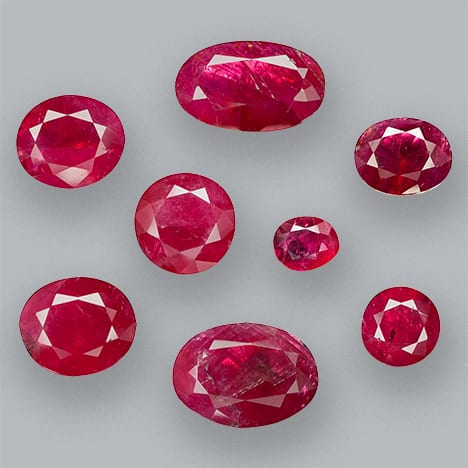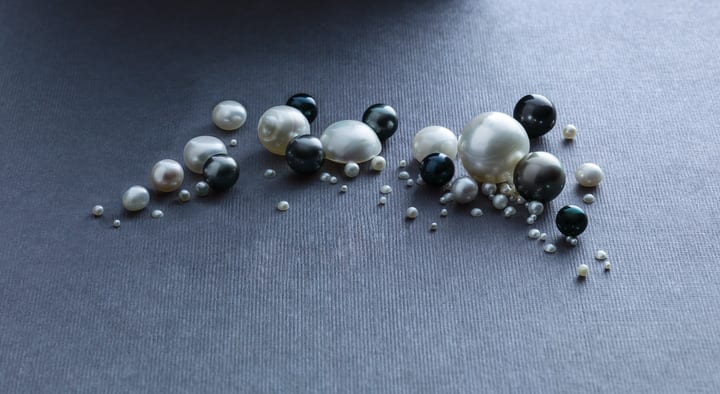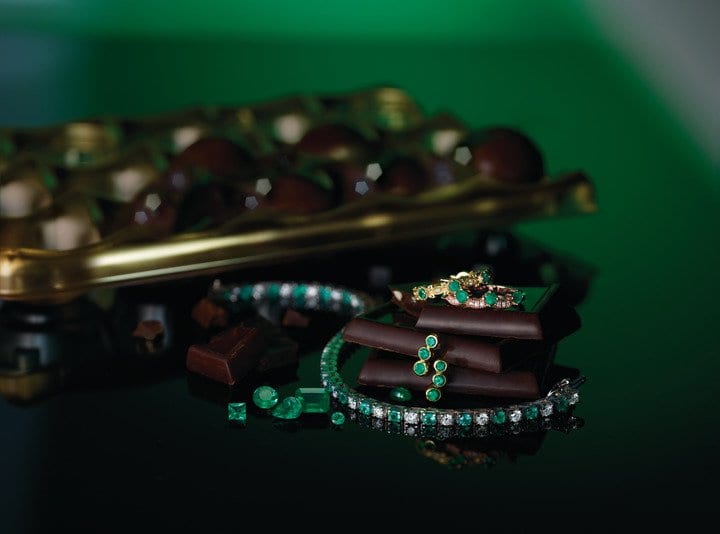Those of you with July birthdays already know your birth month is full of fiery fun. Whether it’s the heat of summer or firecrackers on Independence Day, July has as much vibrancy as its birthstone: the ruby! What’s in a ruby? According to GIA, “chromium is the trace element that causes a ruby’s red, which ranges from an orangy red to a purplish red.” Another factor that goes into a ruby’s intensity is whether or not it was formed in marble. The GIA claims that “marble has low iron content, so the rubies that originate in marble lack iron.” It’s due to this process that many have an intense red color. Some of the most renowned rubies are from Myanmar, northern Vietnam and the Himalayas are typically formed in marble. What’s so great about the July birthstone? Besides their gorgeous, sanguine color, rubies are among the most valuable gemstones. Coming in just after colored diamonds, they command the highest cost per carat out of the colored gemstones. In fact, the most expensive ruby piece, The Sunrise Ruby, smashed world records when it sold in Geneva, Switzerland for $30.4 million. Included in the hefty price sticker is the gold ring and diamonds with which the ruby was set. On top of their high price point, rubies also carry historical significance. One of the world’s first lasers was created using the July birthstone. In 1960, scientist Theodore Maiman used the red fluorescence of the ruby to create the world’s first laser. He used a ruby rod, reflecting mirrors and a flash lamp to emit light. According to an article by Forbes, “one of the coolest applications of the ruby laser back in the day was that it was used to measure the distance to the Moon in 1969.” Along with the distinction of July birthstone, the ruby is also the gem for 15th and 40th anniversaries. Whether you have a loved one with a birthday in July or one of these milestone anniversaries is around the corner, Dallas Gold & Silver Exchange can help you find the perfect ruby piece.
Category Archives: Gemstones
Lucky you, June babies! You have not one, not two, but THREE lovely gemstones to choose from as your birthstone. Most consider pearls as the primary birthstone for the month of June, while Moonstone and Alexandrite are alternatives. All of these stones are rich in their own unique beauty and history. Keep reading to find out more about your lovely birthstones and why you get more than one. Why are there three June birthstones? The Jewelers of America put together the first official list of birthstones in 1912, listing only Pearl and Moonstone for June. It wasn’t until 1952 that Alexandrite was added to the June birthstone list. We guess three was just the lucky number for June! Pearl Like other gemstones, pearls form naturally, slowly for as long as two decades. Unlike other gemstones, mollusks, such as oysters and clam create pearls. Depending on what part of the world the mollusk is from, it changes the pearl type. Due to their rarity and difficulty to find, natural pearls have remained an expensive stone since ancient times. They were revered among royalty and nobility alike and symbolized purity, integrity and love. Moonstone When we say “gemstone,” moonstone may not be the first one that comes to mind. They aren’t as popular as pearls, but we think they are a modern, beautiful alternative. Their adularescence is the first thing you’ll notice in the moonstone. According to GIA, “adularescence is the light that appears to billow across a gemstone, giving its surface a glowing appearance.” Visually, the glow has a moon-like quality, which is where the name moonstone comes from. In the picture above, you can see a moonstone both in its rough form and polished. FUN FACT: The moonstone is the Florida State Gemstone to commemorate the moon landings that took off from Kennedy Space Center. Alexandrite The Alexandrite is one of the newer gemstone discoveries. It was discovered in the Russian Ural Mountains in 1830 and wasn’t added to the birthstone list until 1952. Known as the chameleon of the gemstone family, it’s an “emerald by day, ruby by night” due to its color-changing tendencies. It’s bluish-green in daylight and reddish-purple in lower light. Due to its toughness on the Mohs scale, it makes a great option for rings or bracelets. Just be sure to clean it with warm, soapy water. If you enjoy our gemstone spotlights, follow us on this blog, Instagram and Facebook. Did you miss our May Birthstone Spotlight? Check it out here!
May is upon us, and those of you with birthdays this month have a stunning birthstone: the brilliant emerald. This gemstone’s rich green shade symbolizes the renewal and rejuvenation of spring. In fact, the name “emerald” comes from the Greek word “smaragdus,” which literally means “green.” Interested in learning more about emeralds? Keep reading for a rundown on why this gemstone is so special. In honor of the May birthstone, here are some fun facts about emeralds: High-quality emeralds can actually be worth more than diamonds on a per-carat basis. One of the most expensive, the Rockefeller Emerald, is worth just over a whopping $5.5 million! Emeralds are made up of a type of mineral called beryl, the same mineral that makes aquamarine. Gem experts differ on exactly what shade constitutes an emerald or a less-expensive green beryl. GIA uses lab-graded comparison stones to determine if the green color is dark enough and saturated enough to be called emerald. Cleopatra famously had a passion for these brilliant green stones. Funny enough, Elizabeth Taylor, the actress who notably played the Egyptian queen, had an affinity for emeralds, as well. Her on-again, off-again husband, Richard Burton, gifted her a beautiful necklace beset with emeralds and diamonds from Bulgari. Emerald measures between 7.5 – 8 on the Mohs Scale of Hardness. Though they are durable stones, emeralds are susceptible to chipping and cracking. Rather than using harsh cleaners on emerald jewelry, use mild soap and water to ensure the gemstone’s quality. Dallas Gold & Silver Exchange carries much more than diamonds, silver and gold. We carry a wide range of jewelry featuring gemstones, especially emeralds! If you’d like to see more of our selection, come in and see us weekdays 10 a.m. – 7 p.m. or Saturdays 10 a.m. – 6 p.m. If you enjoyed this post, keep an eye out for future monthly gem spotlights.
- 1
- 2



